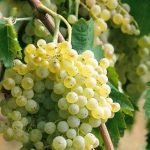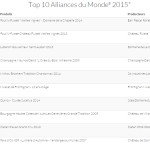The publication calls on growers and winemakers to turn to old varieties.
Croatian Agency for the Environment and Nature and the Zagreb Faculty of Agriculture have published a green paper “Croatian Original Vine Varieties” by Edi Maletić and a group of authors, which provides an overview of 125 local varieties of grapes, the classification of endangered domesticated varieties and measures that could be used to preserve them as these are native genetic resources, reports agrobiz.hr on June 9, 2016.
“This publication is a kind of a call to growers and winemakers to return to the roots and include into their production the old, native varieties, some of which have great economic potential and have been unfairly neglected”, Maletić said.
“The work on this edition has lasted more than 20 years and has resulted in the discovery, genetic analysis and the collection of more than 120 native varieties. So, this book describes 125 native Croatian grape varieties, almost half of which are, unfortunately, endangered. It is interesting that a number of these varieties are parents to some of the world famous grape varieties”, said Maletić, head of the Department of Viticulture and Oenology.
Croatian Agency for the Environment and Nature points out that the original varieties of vines are important not only for the enrichment of the natural heritage, but also as genetic foundations for the future development. Because they were adapting to the local climate and soil for centuries, they became more resistant to environmental conditions than most of the newcomer varieties.
Maletić emphasized that the preparation of the publication was preceded by a long-term scientific and technical research. This book also includes the first classification of endangered domesticated varieties that was ever done in the world. The classification was made using the criteria of the International Union for Conservation of Nature (IUCN) for the categorization of endangered wild species adapted to the domesticated variety. The book includes proposed protection measures in order to preserve indigenous genetic resources as one of strategic guidelines in the context of the world efforts to stop the decline of biodiversity.











